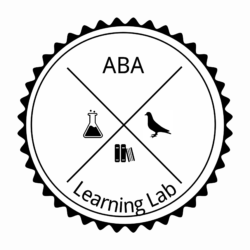By James Macon, M.Ed., BCBA
Feedback is a powerful tool that let’s us know how we are doing. It can be so common place though that we take it for granted. Alternatively, we often assume that when we give feedback, it will be effective in changing the behavior of others and that they will receive it well . As any Behavior Analyst will attest to, that’s not always the case. The good news is that effective feedback does have certain characteristics that we can check for. The following are derived from Aubrey Daniels book “Performance Management, Changing Behavior That Drives Organizational Effectiveness.”
1. Be specific.
It is not sufficient to say that the performer did well, or did poorly. For feedback to be effective, it must be specific and concrete, with pinpointed behavior. The performer must be able to use that feedback to change his or her behavior in the future.
2. Under the performer’s control
Make sure that the performance is actually something under the performers control. While this sounds simple, it is often overlooked. A behavioral technician who isn’t running programs might receive harsh feedback to drastically increase the number of programs being run, or face disciplinary action. Upon closer examination, the technician wasn’t running programs because there were only a few basic ones in the students binder. This is an example of a “can’t do,” versus “won’t do,” and is outside the performers control.
3. Immediacy
The closer the feedback is to the performance, the more effective it will be. In a Discrete Trial Teaching (DTT) scenario, this might look like immediate feedback, within seconds. It could also be after a observation period, within an hour or so. In large organizations however, this is usually not an option. Daily feedback, weekly feedback, and monthly feedback have all been used with success to address the immediacy concerns, but the further away in time feedback is from performance, the less effective it will be.
4. Individualized Feedback
Feedback always works best when it’s individualized. Sometimes it’s necessary to give feedback to a group of people instead of individually. When this is the case, it’s a good idea to embed positive reinforcement opportunities into the feedback. This can be done several different ways, but a simple method is to use public posts of performance, where team performance can be graphically shown over some period of time.
5. Self-monitoring
When feedback is given immediately, it allows the performer to adjust their behavior real time. There is no quicker way to do this then through self-monitoring. In addition, self-monitored feedback can be collected and analyzed into a larger data set for group feedback, allowing duplicate uses for relatively small amount of effort.
6. Delivered by the boss
If feedback is not delivered through self-monitoring, it should be delivered by the boss. There are several reasons for this. If the boss creates the graphs and delivers the feedback, they will be much more likely to know how their employees are doing. If an assistant creates the graph and delivers the feedback, the boss is less likely to know. In addition, when feedback is given by the boss, it allows the employee to know that the boss cares about them, and has a vested interest in their success.
7. Focus on improvement
Traditional feedback often has a negative connotation because it has been paired “poor performance.” The behavior analytic perspective is to make feedback positive, and to focus on active, pinpointed behaviors or results. The Dead-Man’s test applies to feedback as well. If we were to give feedback on number of mistakes made per unit of time, we would be subject to all the problems associated with failing the Dead-Mans test. Instead of number of mistakes, focus on percent accurate.
8. Easy to use and graphed
Feedback is not effective if its complicated and if the person whose behavior we are trying to change doesn’t know how to correct their performance. Make sure when you are delivering feedback that it’s easy to use and understand. A simple and very effective method to help with this is to graph your feedback. The visual display of a graph is easy to use and has reinforcement contingencies built into it.
9. Antecedent to reinforcement
In many non-behavior analytic (and some behavior analytic) companies, when the boss needs to give feedback, it usually means you’re in trouble. This happens through operant conditioning, and the boss ends up becoming an antecedent to punishment. The employee will perform to avoid the punishment contingency (negative reinforcement). This scenario is unfortunate, as it means employee performance will “cap” out at a certain level. Dr. Aubrey Daniels referred to this as discretionary effort, which can be summed up by, “I’m going to do the minimal amount of work to not get in trouble.” If you are antecedent to reinforcement on the other hand, employees will be happy to perform to get more feedback from you.

